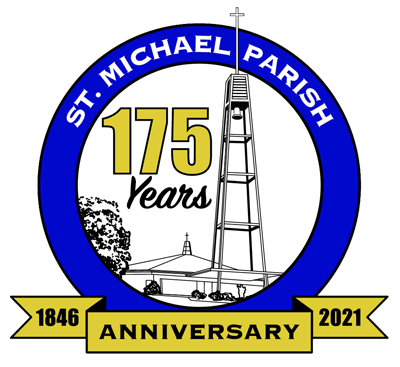St. Michael Parish: Celebrating 175 Years
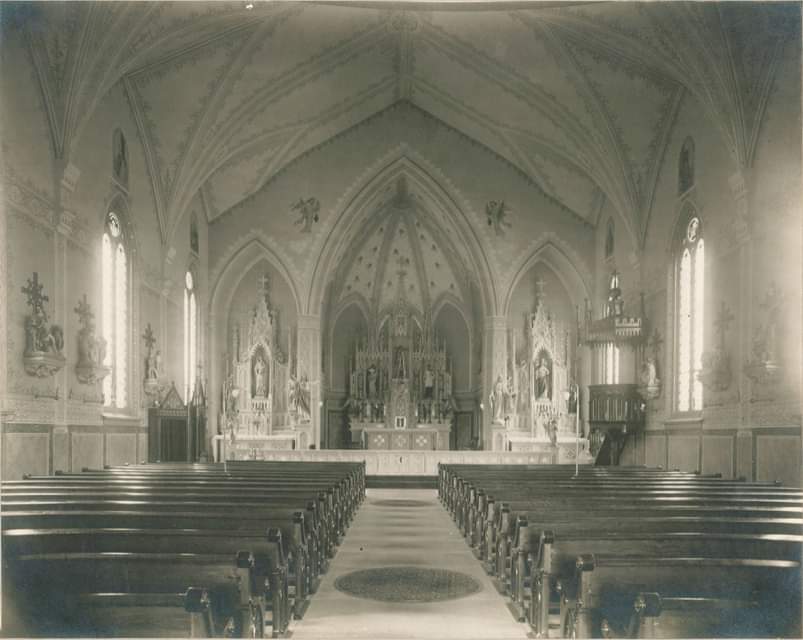
St. Michael's Church, circa 1921. Photo courtesy of Archdiocese of Milwaukee.
St. Michael's was settled by a group of German Catholic emigrants who left their little village of Strohn, Prussia, Germany, and came together to Wisconsin in 1846, led by Michael Rodenkirch.
It should be noted there was a large migration of Germans at the time, especially from Prussia, due to the persecution of the Catholic Church and the desire to seek better opportunities for themselves.
According to one source, the families who founded St. Michael's were those of Michael Rodenkirch, Theodore Thull, Hubert Herriges, Jacobus (John) Theusch, Peter Schneider, J. Keller, H. Junk, P. Boehm, J. Rodermund, and J. Hammes.
Another source states the original founders were Michael Rodenkirch, Hubert Herriges, Anna Schneiders, Peter Schneider, Katherine Schaefer, Margaret Juver, Mathias Clames and his wife, Margaret Schmitz, Mary Weber, Peter Laubach, Peter Mertes, Gertrude Herriges, Theodore Thull, Bernard Klunke, Susan Thull, Phillip Schneider, Mathias Thull, and Anna Rodermund.
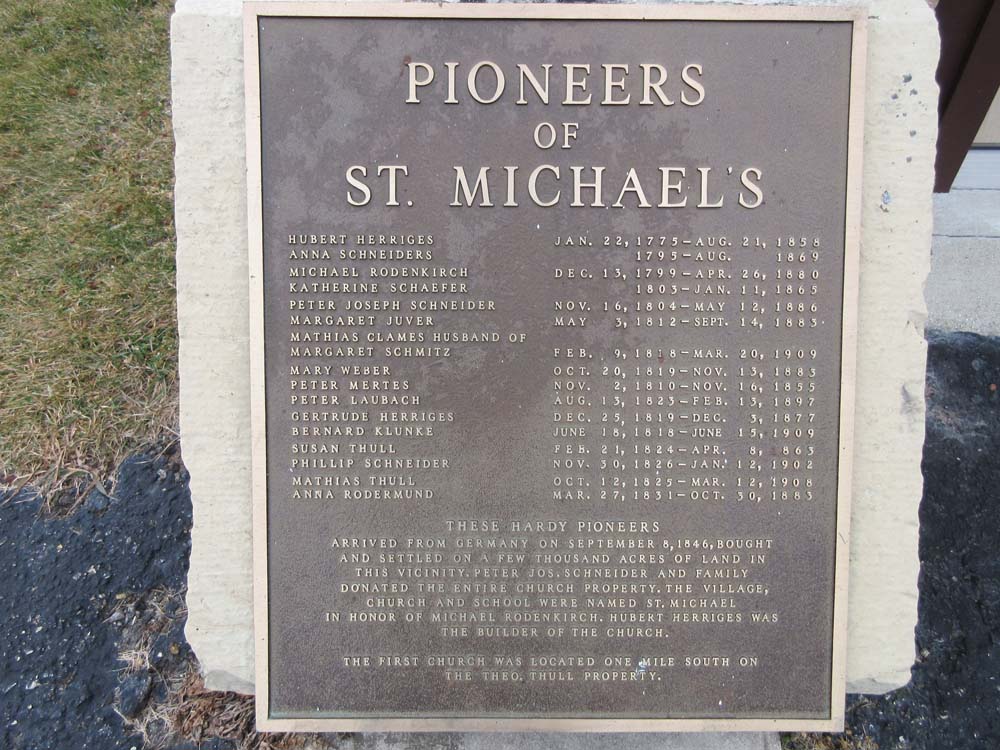
Plaque honoring the pioneers of St. Michael's, located at the St. Michael's Cemetery Shrine/Chapel.
This group of emigrants sailed across the Atlantic Ocean, on a ship called The Clinton, and landed in the Port of New York after 52 days at sea. In New York, they found little opportunity to practice the trade they new well — farming. Hearing about the opportunities on the frontiers of America, which then was the Midwest, they decided this would afford them the best opportunites to settle and farm the land as they did back in Germany.
Michael Rodenkirch, in a now-famous letter to relatives back home, describes the journey these pioneers took to arrive in Wisconsin in 1846:
From New York, you should acquire passage on a steamship to Albany. From Albany to Buffalo you may travel by Rafter, perhaps Ferry or Railway. [He is speaking here of the Erie Canal.] From Buffalo, you travel again by steamboat to Milwaukee in West konsin... We had made arrangement for passage to Chicago, however, we went ashore at Milwaukee on Lake Michigan, 80 miles above Chicago.
We live now 40 miles northeast of Milwaukee in town 12, range 19, section 13. We are well satisfied here, have good land and none molest us.
These settlers purchased several thousand acres of land in what is now the Town of Farmington, with the remainder in the Town of Kewaskum. Their arrival on the land was September 8, 1846.
Shortly after settling their land, the parish was born as the faithful gathered in the home of Michael Rodenkirch for church services.
Now, unless we want to travel great distances, we must have our prayers and devotions in our own homes. The Gospel we find in our books and meanwhile must be content with that.
The settlers built their first church on the Theodore Thull property at what is now the corner of County Highway H & Forest View Road. A small log church building was constructed by Hubert Herriges at a cost of $25 and was completed in 1847. The parishioners named the church in honor of Michael Rodenkirch's patron saint, Saint Michael the Archangel. The choir was organized with this very first church in 1846. Original choir members were from the Thull, Schneider, and Rodenkirch families.
As the congregation grew, a new church, a small school, and a two-room rectory were built on a five-acre property donated by Peter Schneider. This property is where the current St. Michael's Congregation is located. A fieldstone church was built by Mathias Herriges and was located at the northern end of the present St. Michael's Cemetery. Its cornerstone was laid on May 6, 1855, and total cost of this church was $800. The rectory was built at the location of the present rectory, and its foundation can still be seen in the basement of the present rectory.
Later there was a need for a school building large enough to accomodate the number of children who wanted to enroll. A two-story fieldstone school was built, along with a convent to accomodate the nuns who would staff the school.
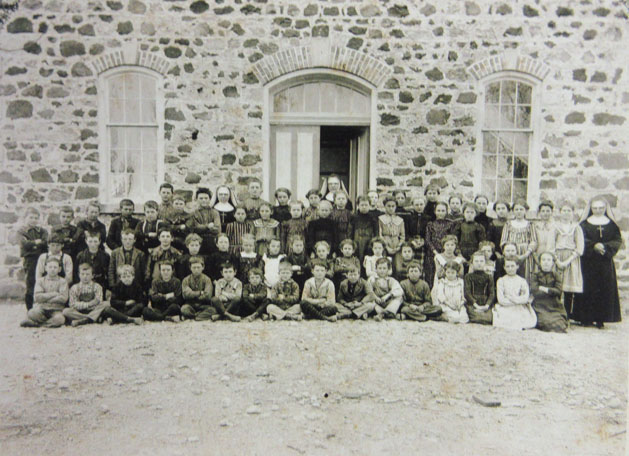

St. Michael School would close in 1968. The School Sisters of St. Francis could no longer supply nuns to teach, and the parish could not afford lay teachers.
To accomodate the still-growing parish, a new brick church was erected in 1884, located just to the north of the present rectory. The steeple tower was 120 feet above the surrounding landscape, and the seating capacity was 250 adults. The interior featured a wooden main altar with two side altars, all hand-carved. Total cost of the new brick church was $1500.
St. Michael's celebrated its Golden Jubilee in 1896, and by this time, a new rectory had been constructed to serve as the parish office and residence of the parish priest.
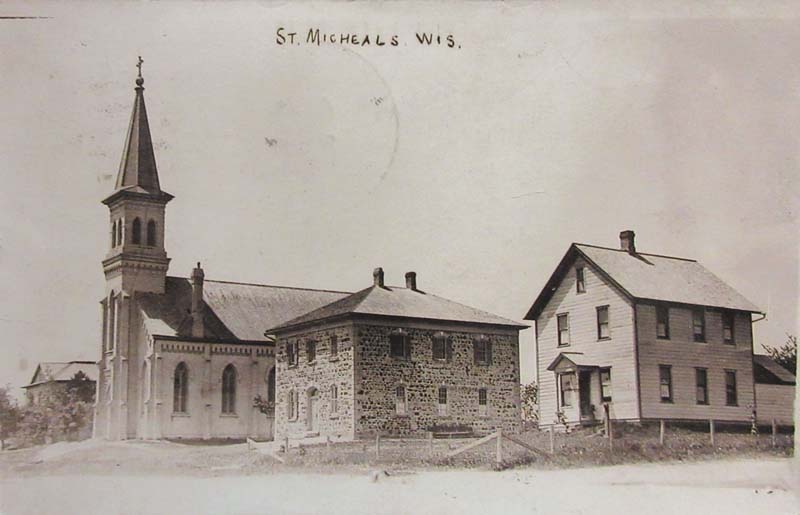
Postcard of St. Michael's Church community. From left: rectory, church, school, and convent. The rectory is the only original building still standing.
Disaster struck in the early hours of January 4, 1971, when during a thunder snowstorm, lightning struck the steeple of the beautiful brick church and started it on fire. The parish priest was able to rescue the Blessed Sacrament and a few other church items before the fire spread rapidly throughout the structure.
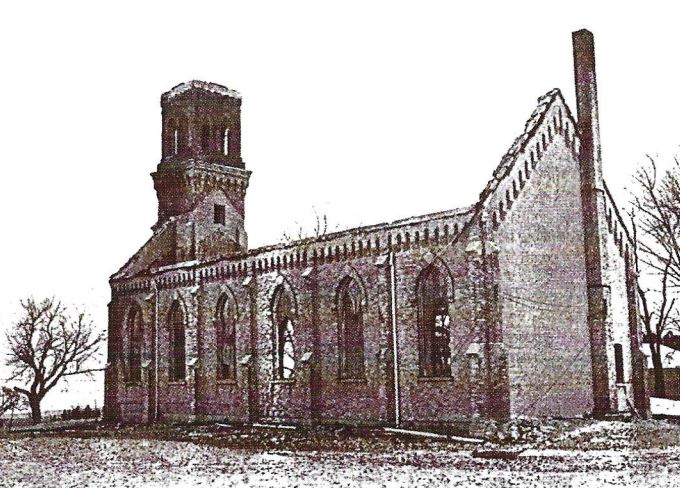
The building committee, planning for the future, decided to build a new church with a larger seating capacity. The rubble of the burned church was sold for two cents per brick to help fund the new church.
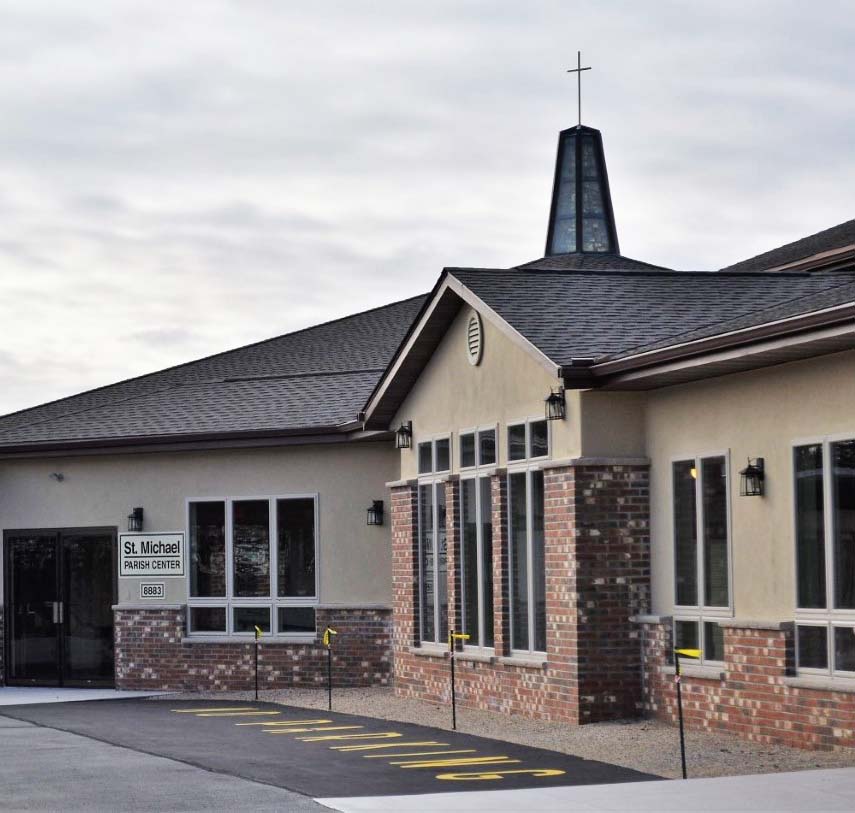
Photo courtesy of St. Michael Parish.
The cornerstone of the new church was laid on October 31, 1971, and dedication was held on June 25, 1972. The church stands proudly today at the southwest corner of the main parking lot.
Excerpts and select photos from The History of St. Michael's Church – 1846-1996 Sesquicentennial Celebration, 1996.

Note: St. Michael Parish celebrates its 175th anniversary in 2021. For more information, visit their website, or follow them on Facebook.
